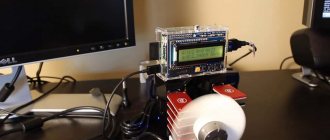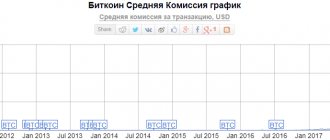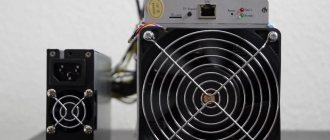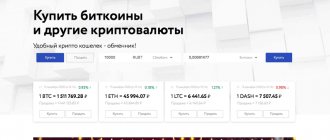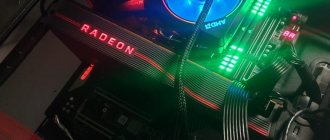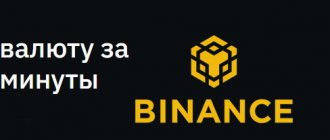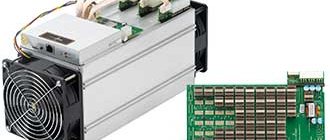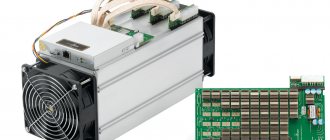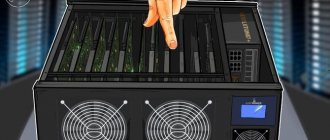December 23, 2017
Bitfury is a major player in the cryptocurrency mining market. Not long ago, news appeared that the company plans to participate in the development of the largest American mining system. Bitfury's products include not only large installations for industrial mining of virtual coins, but also more compact ASICs. They cannot be called amateur, since the price of the installations is rather high, but it is not hundreds of thousands or millions of dollars for a finished object.
One of the company’s products is ASIC Bitfury B8, one of the most powerful devices for mining coins using the SHA-256 algorithm. The most popular currencies of this type are Bitcoin and its fork Bitcoin Cash, which has recently shown great growth. This is one of the most powerful ASICs on the market, so its price is quite high. According to pre-order, Bitfury B8 costs about $7-9 thousand, but its deliveries are expected only by the summer of 2022. You can buy the installation right now for much more, from about 1 million rubles.
But against the backdrop of this gloomy news, there is also a positive: the FSB recently issued notifications on these miners, so there should be no problems with the legality of their import. But is it worth ordering and importing them? A review and calculation of the payback of Bitfury B8 will help you find out.
Characteristics of Bitfury B8
- Algorithm: SHA-256 .
- Productivity: up to 50 TH/s .
- Chip type: Bitfury 16nm BF16BTC8162 .
- Chip technology: 16 nm .
- Number of chips: 576 (on 6 boards) .
- Communications: Ethernet 100 Mb/s LAN .
- Power consumption: 6400 W.
- Energy efficiency: 0.13 J/GH .
- Form factor: standard server (19″), 6 bays .
- Dimensions: 27x44x65 cm .
- Weight: 37 kg .
How does Clarke work?
Clarke is manufactured using a 14nm process technology and implemented in the LGA 35L form factor measuring 6x6 mm. The second case has a more efficient distribution of power circuits on the board. The chip solves 120 gigahashes per second, but makes it possible to adjust performance depending on what the miner needs now - higher hashrate or low power consumption. In particular, it is possible to achieve an energy efficiency coefficient of 55 mJ / gigahash, since 0.3 volts is enough to power the chip. The Clarke structure looks like this:
Clock signal generator.
It sets the clock pulses for the chip to operate. Voltage levels: VSS = 0, VDD = 1.
Serial control interface
, connected to an external controller via a serial bus. It is similar to an SPI bus with MOSI and MISO data pins (used to transfer data from master to slave and vice versa) connected by an SDATA line.
The interface is responsible for transmitting commands. Here are some of them: task write to write a new task, force task switch to force a buffer switch, read nonces to read the nonce value, etc. All commands have the same template and contain code, length, data field, chip status byte, data from the buffer nonce and checksums.
Checksums are the arithmetic sum of bytes, starting with zero.
For example, the checksum of the command 04 03 03 8c 18 00 will equal AE.
Nonce control system.
Controls the hash calculation process taking into account the mask. The mask “lies” in the task buffer and is used to set the calculation range. It defines bits in the nonce that will remain unchanged when searching for a new value.
Task buffers.
Needed to calculate hashes (their length is 20 double words). There are two buffers in total, which allows you to quickly switch between tasks. While the first buffer is busy solving the hash, data for the next calculations is written to the second.
8154 ring hash cores.
They use dual SHA256 algorithm.
Buffer nonce.
This is a ring buffer 12 double words long, where hash solutions are written. As an example, we have given the process of data exchange in the chip that occurs during the calculation of hashes (in the spoiler below):
Data exchange in the chip (in English)
// Program clock generator to value 0x20 and prescaler=1 (disabled) Send: 0803038c1800 Recv: f0b200b2 // Set nonce mask to 0x00000000 Send: 200300000000 Recv: f0230023 // Force task switch Send: 020000 Recv: f0020002 // Send task Wi 0=CD3F992C 1=037F8197 2=A58E091A MS0 A=0CAD7CD1 B=CBE38FD9 C=D14DC164 D=F90EB10B E=819621CF F=358D45CD G=8C14CAE3 H=538EF887 MS3 A=5FF18CDD B=8CDA24A4 C= 180266F9 D=0CAD7CD1 E=B0CA39FA F=DD30B962 G=36D2CBC6 H=819621CF NONCE=D5D0E8B9 Send:_014fa607d67b614925737be76bce53a41ba12b3c8b659f27ef6726be6049f924522d2b3c8b659c78616c779 a13c81a609 35067953386a9d52b3d0f24a3b0a607d67bb2a8cc5326708e0ef55b267700000000 Recv: 0fb200b2 // Force task switch Send: 020000 Recv: 0f020002 // Read nonce buffer Send: 0 40000 Recv:_0f040000000000000000000000000000000000000000000000000000000000000000003ffffffc7f7a42132ffffffc 1ffffffc0001ffbf8c FIFO[0] = aaaaaaaa FIFO [1] = aaaaaaaa FIFO[2] = aaaaaaaa FIFO[3] = aaaaaaaa FIFO[4] = aaaaaaaa FIFO[5] = aaaaaaaa FIFO[6] = aaaaaaaa FIFO[7] = 3ffffffc FIFO[8] = d5d0e8b9 < — nonce value FIFO[9] = 2ffffffc < — task switch marker FIFO[A] = 1ffffffc < — task switch marker FIFO[B] = aaab5515
Design and features of Bitfury B8
Bitfury B8 is made in a metal case, the dimensions are compatible with standard 19″ server racks, it occupies 6 compartments. The ventilation system is through, with 6 fans located on the front panel and corresponding grilles at the rear.
In addition to the coolers, on the front there are connectors for two power supplies, switches, signal LEDs and a LAN port. The fans are covered with regular removable grilles, which can make them easier to clean from dust if the need arises.
The internal layout is quite simple: in the Bitfury B8 case there are 6 motherboards arranged in a row, covered with massive aluminum radiators. There is also a controller board at the front. Each motherboard has 96 BF16BTC8162 chips. There are also connectors on the back for connecting power.
In general, the design turned out to be massive and impressive; the miner is noticeably larger than the same Antminer S9. In terms of weight and size characteristics, it is closer to Ibelink products, made in a similar format.
Why is it worth mining?
Mining is very simple: you buy equipment, and it makes a profit by mining cryptocurrency. In addition, this is a very profitable and fairly quickly paid off investment, due to the fact that the value of digital currency is constantly growing. You don’t need to spend a long time looking for where to invest your money profitably, since using this method it will quickly pay off.
However, finding a good mining device is not always easy, as they sell out quickly. When choosing, you should focus on the quality and practicality of the ASIC, as well as the affordable price, high-quality assembly and good performance.
Naturally, mining devices are becoming more and more improved every year, as this is due to the increasing complexity of the cryptocurrency mining process. Therefore, if you decide to seriously engage in this type of activity, then you should constantly monitor the appearance of more powerful miner models on the market.
Payback of Bitfury B8 in Bitcoin mining
Waiting for summer 2022 is a somewhat dubious idea, although you can take a chance and pre-order. But we will start from current retail prices, since after six months the above calculations will lose all relevance. And the cheapest place to find an ASIC in stock was on Avito; the reseller asks 1.3 million rubles for it. We will take this price as a basis, and to calculate consumption we will traditionally use the Moscow tariff, about $0.09 per kWh.
According to the Cryptocompare calculator, at the current Bitcoin rate of $15 thousand, the profit from Bitfury B8 will be $2,700 or 0.2 BTC per month. During the year, about 2.45 BTC will be mined, but taking into account the subsequent decrease in benefits due to increased complexity, this number will be approximately 2 BTC. Electricity will be spent in the amount of about $5 thousand per year.
Based on the calculations obtained, the time to break even for Bitfury B8 is less than a year. This is a fairly adequate indicator, especially if we assume that the BTC rate will continue to grow in the future or at least will not fall. In this situation, in 8-9 months you will be able to “break even”, and then earn more than 1 BTC before the profitability decreases very significantly. With cheap electricity, the ROI period will be even lower.
Where will the chip be used?
We are currently installing new devices in our own mining servers and BlockBox mobile data centers.
We are also modifying Bitcoin farms in Canada, Iceland, Georgia and Norway (launched at the beginning of the year). Clarke chips will also be available as a commercial product.
In particular, they come with Bitfury Tardis miners, designed for large organizations. Tardis fits 5-8 boards, capable of calculating up to 80 terahashes per second. This miner can be upgraded - in the future, the Clarke ASICs installed in it will be replaced with new chips. This is our short video introducing the concept of the new chip:
Payback of Bitfury B8 in Bitcoin Cash mining
Another currency showing growth, Bitcoin Cash, operates on the SHA-256 algorithm. Therefore, it is worth calculating the estimated profitability of Bitfury B8 for it as well. Unfortunately, Cryptocompare does not support this coin, so we will use In-Trend calculations.
The calculator reports that at the time of writing the review, the estimated daily income will be $142, electricity costs will be up to $14, and the net profit will be $128. Multiplying by 365, we get about $47 thousand per year. We subtract from this $22 thousand for the ASIC itself, as a result, the annual profit will be $25 thousand. In this situation, the minimum period of ROI reaches less than 6 months, in reality (if the exchange rate remains the same) it will be more, about 7-8 months.
Thus, it turns out that using Bitfury B8 for mining Bitcoin Cash is more profitable. But it is worth remembering that the BCH price is subject to fluctuations more than BTC, so everything can change very soon.
The history of BitFury
The date of birth of the company is 2011. The creator of the brand is a citizen of Latvia and a resident of Ukraine Valery Vavilov.
At first, developers generated bitcoins using PC central processors, as well as using graphics processors.
A little later, a decision was made to design and implement ASIC chips.
The creator of BitFury reported that in 2013, he, together with other partners, managed to develop a chip using 55-nanometer technology. This marked the beginning of work on creating our own unique production of high-tech chips.
The starting capital was only $110 thousand; the growth of the Bitcoin rate, which literally in a couple of months rose from $100 to a record for that time of $1200, helped to significantly increase resources for development.
The success of the brand was not long in coming. The company launched its production in Iceland, Georgia and partly in Finland. A significant share of the company's computing power came from the Ghash.io pool.
In 2014, an unusual event occurred - the power of BitFury, unexpectedly for everyone, amounted to 45% of the Ghash.io pool. The founder of the project decided to withdraw the capacity of ASIC chips of his own brand from the Ghash.io mining pool (there was a short period when the total share exceeded the critical level of 51%) in order to reduce the risk of network centralization.
Even today, years later, BitFury occupies a significant share of the computing power of the Bitcoin network.
According to official data, by the end of 2022, its share is 9.5% of all computing power for bitcoin.
The 14th and 15th years were marked by three successful companies in attracting investment.
The amount of each of them was 20 million US dollars.
The funds raised were used to develop the scientific and technical base and data centers.
- First investment round. The event occurred in May 2014. Many well-known venture funds Binary Financial, Crypto Currency Partners, as well as Queensbridge Venture Partners and the German group ZAD Investment Company were attracted as co-investors. The Georgian National Co-Investment Fund also took part in the company. In addition, two well-known private investors were involved in the work;
- The second round took place in October 2014. The lion's share was made up of the Georgian Co-Investment Fund, as well as private venture investor Bill Tai. Google Maps and its subsidiary Google Wave came to the platform as investors;
- The third and final round took place in May 2015. The investors were the Georgian Co-Investment Fund and DRW Ventury Parters. Significant assistance was provided by the Russian company iTech Capital, which became one of the first public investment companies in the Russian Federation associated with Bitcoin.
In June 2016, the Blockchain Trust Accelerator Initiative (BTA) was created, which helps adapt blockchain technology to the public sphere.
In 2022, the company took part in the World Economic Forum in Davos, where it came up with ideas for popularizing the use of blockchain technologies in various areas, as well as developing cooperation between business and government in this direction.
In the same year, an agreement was concluded with the Chinese government on the implementation of hardware technological solutions of the BitFury platform into the government structure of the PRC (note that this all happened against the backdrop of a sharp curtailment of ICOs and tightening of crypto regulation in the PRC in 2022).
Today, the company, in addition to hardware for mining, has developed projects and is implementing a set of measures for the use of the blockchain system for government agencies.
go
